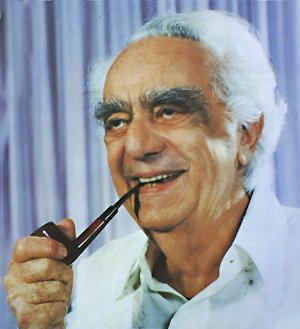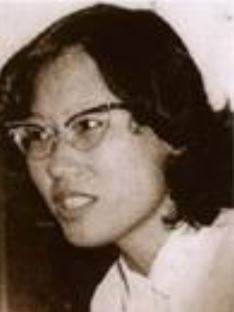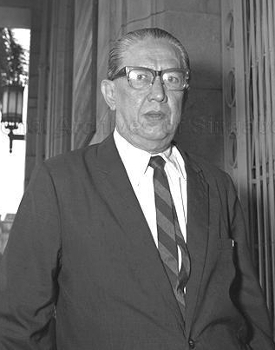
Lee Kuan Yew, often referred to by his initials LKY, was a Singaporean statesman, politician, and lawyer who served as the Minister Mentor between 2004 to 2011, Senior Minister between 1990 to 2004 and first prime minister of Singapore from 1959 to 1990. He served as the secretary-general of the People's Action Party (PAP) from 1954 to 1992 and was the member of Parliament (MP) for Tanjong Pagar from 1955 until his death in 2015. Lee is widely recognised as the founding father of the modern Singaporean state, and for his leadership in transforming it into a highly developed country during his tenure.

The People's Action Party (PAP) is a major conservative political party of the centre-right in Singapore. It is one of the three contemporary political parties represented in the Parliament of Singapore, alongside the opposition Workers' Party (WP) and the Progress Singapore Party (PSP).

David Saul Marshall was a Singaporean barrister and statesman who served as the inaugural Chief Minister of Singapore from 1955 to 1956. He resigned after just over a year at the helm after his delegation to London regarding negotiations for complete home rule and eventual independence of Singapore was initially rejected by the British. However, Marshall was nevertheless instrumental in forging the idea of sovereignty as well as in subsequent negotiations that led to its eventual self-governance from the United Kingdom in 1959.

Barisan Sosialis was a political party in Singapore. It was formed on 29 July 1961 and officially registered on 13 August 1961 by left-wing members of the People's Action Party (PAP) who had been expelled from the PAP. The prominent founding members of the Barisan were Lee Siew Choh and Lim Chin Siong. It became the biggest opposition party in Singapore in the 1960s and the 1980s.

Lim Chin Siong was a Singaporean politician and union leader active in Singapore in the 1950s and 1960s. He was one of the founders of the governing People's Action Party (PAP), which has governed the country continuously since independence. Lim also used his popularity to galvanise many trade unions in support of the PAP.

The Hock Lee bus riots took place on 12 May 1955 in Singapore. The riots started as a result of confrontation between the police, bus workers of the Hock Lee Amalgamated Bus Company and students who supported the bus workers.

Lim Yew Hock was a Singaporean-born Malaysian politician and diplomat who served as Chief Minister of Singapore between 1956 and 1959. He was the Member of Parliament (MP) for Cairnhill between 1959 and 1963 and previously a Member of the Legislative Council and later Legislative Assembly between 1948 and 1963. He was de facto Leader of the Opposition between 1959 and 1963. He and his family elected to take up Malaysian citizenship after Singapore's independence from Malaysia.

The 1964 race riots in Singapore involved a series of communal race-based civil disturbances and racially-motivated violence between the Malays and Chinese in Singapore following its merger with Malaysia in 16 September 1963, and were considered to be the "worst and most prolonged in Singapore's postwar history". The term is also used to refer specifically to two riots on 21 July 1964 and 2 September 1964, particularly the former, during which 23 people died and 454 others suffered severe injuries.

Chung Cheng High School (Main) is a co-educational government-aided autonomous Special Assistance Plan (SAP) secondary school in Singapore. Founded in 1939, it is one of the eleven SAP secondary schools in Singapore. Another Secondary School in Singapore, Chung Cheng High School (Yishun), is its sister school.

Maris Stella High School (MSHS) (Chinese: 海星中学; pinyin: Hǎixīng Zhōngxué) is a government-aided, all-boys Catholic secondary school with autonomous status. As a full school, it comprises a primary section offering a six-year programme leading up to the Primary School Leaving Examination, as well as a secondary section offering a four-year programme leading up to the Singapore-Cambridge GCE Ordinary Level examinations. Run by the international Marist Brothers at Mount Vernon Road, Singapore near Bartley MRT station, Maris Stella High School is one of the eleven Special Assistance Plan(SAP) high schools in Singapore.

General elections were held in Singapore on 30 May 1959. They were held under the new constitution and were the first in which all 51 seats in the Legislative Assembly were filled by election. This was the first election victory for the People's Action Party (PAP), as they won a landslide victory with 43 seats. The party has remained in power ever since.

The self-governance of Singapore was carried out in several stages. Since the founding of Singapore in 1819, Singapore had been under the colonial rule of the British. The first local elections on a limited scale for several positions in the government of Singapore started in 1948 following an amendment to the Constitution of Singapore.

Singapore, officially the State of Singapore, was one of the 14 states of Malaysia from 1963 to 1965. Malaysia was formed on 16 September 1963 by the merger of the Federation of Malaya with the former British colonies of North Borneo, Sarawak and Singapore. This marked the end of the 144-year British rule in Singapore which began with the founding of modern Singapore by Sir Stamford Raffles in 1819. At the time of merger, it was the smallest state in the country by land area, but the largest by population.

In December 1953, the British colonial government in Singapore passed the National Service Ordinance, requiring all male British subjects and Federal citizens between the ages of 18–20 to register for part-time National Service. The deadline for registration was on 12 May 1954 and those who failed to register would be either jailed or fined. On 12 May 1954, students from the Chinese Middle Schools did not register themselves for National Service. In light of the impending deadline for registration and with requests from the Chinese students, Chief Secretary William Goode would later meet representatives from the affected student body in the government house on 13 May 1954.

Sir Han Hoe Lim was a Singaporean physician and politician.

Linda Chen was a Chinese-born, Singaporean linguist, writer, feminist and businesswoman. Having immigrated from China as a young child, Chen learned Chinese, English, and Malay and used her linguistic talent to write a Malay-Chinese dictionary that became widely used to teach Malay in the 1950s and 1960s. During her student days, she became active in the anti-colonial and women's rights movement. Because of her activism and heritage, she was seen as a threat and a ring-leader of communist infiltration into the country. Despite her denying that she was a communist, she was arrested in 1956 and jailed for 20 months, detained and kept under surveillance for four years between 1959 and 1963, and rearrested in 1963 as part of Operation Coldstore. After her release from prison, she lived in London for four years and then returned to Singapore, where she managed her family's multi-national book store until her death.
The following lists events that happened during 1956 in Colony of Singapore.
Fong Swee Suan was a trade unionist, founding member of the People's Action Party (PAP) and a Barisan Sosialis leader.

Armand Joseph Braga was a Singaporean politician and lawyer who served as the first Minister for Health between 1955 and 1959 and was a member of Labour Front. He was a part of the first Legislative Assembly of Singapore, representing Katong Constituency.

Francis Thomas was an English-born Singaporean former politician and educator. A founding member of political party Labour Front, he served as the Minister of Communications and Works from 1955 to 1958 during the 1st Legislative Assembly of Singapore.
















